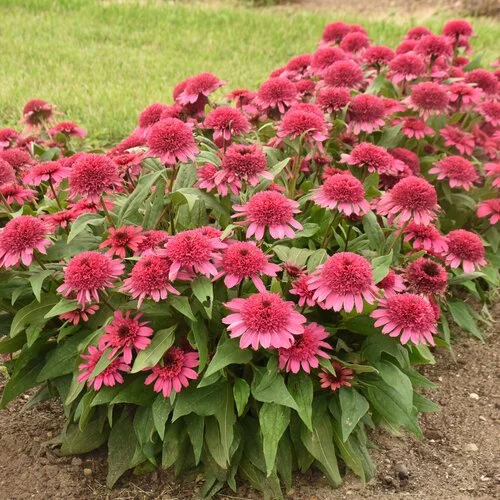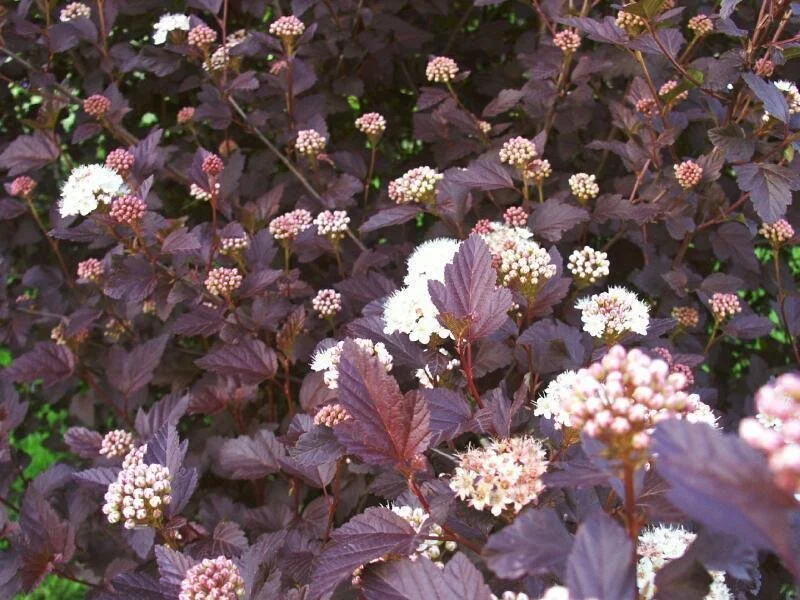Not All Natives Are Equal: How Cultivar Traits Impact Insect Use
When we choose native plants, we’re often doing more than designing a garden—we’re building habitat. But what happens when the “native” plants we select are cultivars—those trademarked, cloned, or selectively bred versions we find at garden centers?
The short answer: not all cultivars are created equal when it comes to supporting wildlife. In fact, some traits we humans select for—like double blooms or unusual leaf color—can unintentionally make a plant far less useful (or even useless) to pollinators, caterpillars, and other insects.
Here’s a closer look at which cultivar traits may interfere with ecological function, and what to watch for when designing a pollinator- or bird-friendly garden.
1. Double Flowers: Pretty but Problematic
Many cultivars have been bred for larger, more petal-heavy flowers—often referred to as double blooms. While they may be eye-catching to us, they often come at a cost:
Reduced nectar/pollen access: Extra petals can block pollinators from reaching the floral resources.
Fewer reproductive parts: Some double blooms don’t even produce pollen or nectar at all.
Altered scent cues: Pollinators often rely on scent as much as sight; changes in floral structure may reduce those signals.
Example: Double coneflowers attract fewer bees than their single-bloom relatives.
2. Foliage Color Changes: Pretty Purples & Reds May Repel
Plants with unusual foliage colors—like purple-leaved ninebarks or chartreuse elderberries—may be less appealing or nutritious to insects that evolved with the green-leafed straight species.
Leaf chemistry changes: Color mutations often come with chemical changes that can deter or confuse leaf-eating insects.
Lower host value: Some caterpillars refuse to feed on altered foliage altogether.
Example: Studies have shown that some red-leaved cultivars of native viburnums and ninebarks host significantly fewer caterpillars than their green-leaved counterparts.
3. Sterile Cultivars: No Seeds, No Food
In an effort to control spread or eliminate “messiness,” some cultivars are bred to be sterile. While this can be helpful in some settings, it can also mean:
No fruit for birds or mammals
No pollen transfer for specialist bees
Reduced genetic diversity in the landscape
Example: Sterile forms of native plants like Echinacea purpurea may have little to offer wildlife if they lack both seeds and viable pollen.
What Traits Are Usually Safe?
Not all cultivars are problematic! Some traits don’t seem to interfere with insect use, especially when the changes are structural or aesthetic without impacting flowers or foliage chemistry.
✔️ Improved disease resistance
✔️ Earlier or longer bloom time
✔️ Increased flower production (when not double)
✔️ Compact form without sterile traits
The Bottom Line: Straight Species Still Reign Supreme
Whenever possible, aim to include straight species—plants grown from wild-type seed that maintain full genetic diversity and ecological function. But when you do choose cultivars (especially for garden structure or design goals), select those that preserve:
True flower form and access
Natural foliage chemistry
Seed or fruit production
Every bit helps. Even choosing one straight species over a sterile cultivar can make a difference for the bees, butterflies, and birds that depend on your garden.




